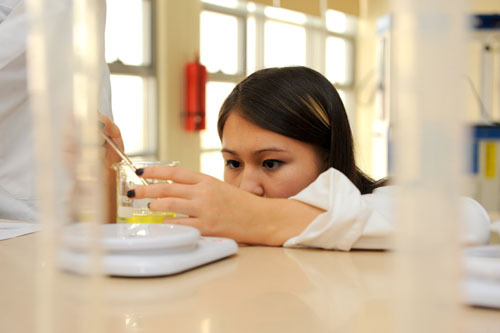
Na Finlândia (ao contrário dos Estados Unidos), as realizações de matemática e ciências de meninas e meninos, como rastreados por meio de medições nacionais e internacionais, são muito mesmo. Pasi Sahlberg, one of Finland’s visionary educators and author of the globally acclaimed Lições finlandesas – O que pode o mundo Aprenda com a mudança educacional na Finlândia, explains: “Finland has done a lot of work during the past two decades to make science and math more attractive to both boys and girls by bringing these subjects closer to real life.” Pasi further comments that strategies have included “making sure that curricula and textbooks are gender-neutral, isso é, they don’t contain unnecessary stereotypes.” Na Finlândia, students do not take any standardized tests until the end of their high school education. Sahlberg believes that this allows for more focus on project based creative learning versus simply remembering facts.
The big questions that educators, industry and policymakers are trying to answer are how to prepare women for science, tecnologia, engineering and math careers. O GEMS Academia Mundial recently held a forum to explore how to empower women to take on STEM (Science Technology Engineering Mathematics) subjects and build a more balanced workforce. I spoke with speakers Michelle Larson (Presidente & CEO of Adler Planetarium), Theresa Mintle (CEO, Chicagoland Chamber of Commerce), Kate Eyler-Werve (project manager, Mightybytes Inc.) and Thomas Steele-Maley (Director of Academic Technology and Innovation for GEMS World Academy – Chicago) about the challenges of connecting young women to STEM.

Why is the math/science gender gap worse in the US compared to other countries like Finland?
Michelle Larson: We’re not embracing our strength. We’re problem solvers, but now we’re doing rote memorization. There may not be a test that adequately measures problem-solving abilities. There is a place for measurement, but we’re making it only about that.
How do you make that cultural shift?
Larson: You need to have a conversation about what does have value. We can measure success around whether a child solved a problem and built a canoe, por exemplo. It doesn’t have to be how you scored on a test.
Theresa Mintle: It’s a little bit of everything. You have fewer resources to invest in standard education, let alone what else we can create. Our generation has to get out of the way.
Why haven’t we encouraged more girls to embrace STEM?
Kate Eyler-Werve: It’s a pervasive cultural problem – it has to be addressed on the corporate level and in the classroom. We have a lot of folks who are working on it. We have to talk to young people and do it very practically – you have a goal and want to learn how to get there.
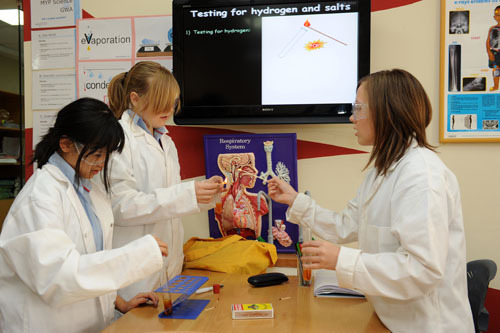
Why does STEM matter?
Eyler-Werve: To build a better toolbox and to get the kind of job that you want, you need STEM skills. It is important for young people to think about the world as problems to be solved. Sparking curiosity about the world in a way that presents it as questions that you can answer. The most interesting jobs are the ones that need the tools you have with math and science classes: learning how to work in a chemistry lab is something you can only do in an institution; you can learn to write anywhere.
Larson: Public understanding of science and the philosophy are critical to our society. Noticing what doesn’t add up, asking why, and always being critical – these are the skills our students need. Don’t just take things because they say them. We need to rekindle the curiosity and skepticism of science: “Tell me more, help me discover.”
What are your solutions for getting more girls interested in STEM?
Larson: The way we teach too often is doing other people’s experiments. Science is really about solving mysteries. Science isn’t boring, but too often the way we expose people to it is boring. We need to figure out a different way to motivate learning the tools.
Mintle: The jobs of the future are in STEM. The more we understand that and the more we invest in it, the more jobs there will be.
In some circles, STEM has evolved to be STEAM, adding art. How does Art get built in?
Eyler-Werve: Knowing how to build an interface, HTML & CSS, and Javascript, is Art. The design gives it meaning, and can make it useful and beautiful.
Larson: A lot of opportunity is in what I call the “mash-up places.” Aprender a arte ea ciência – tanto codificação e design – é preciso. Você precisa posicionar-se de modo que quando o mundo muda, você está pronto para isso, because you have those underlying skills.
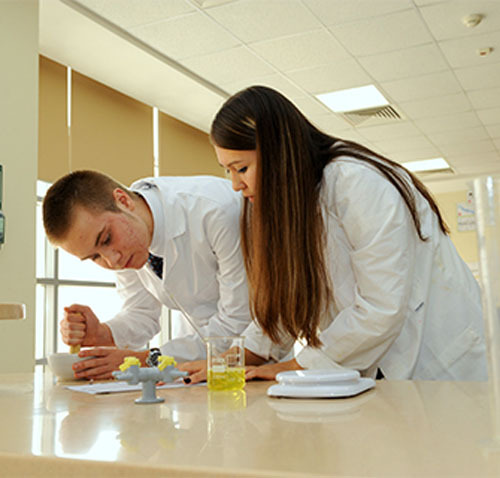
How do we take advantage of kids’ natural adeptness with technology?
Mintle: We need to embrace what these kids are experiencing. In the formal classroom, on the baseball field, and in the kitchen, we need to make sure we don’t stifle that curiosity and their exploration. As scary as it is, it will pull the adults along with them and it will be good.
Larson: This is an inherent challenge in education. People want to teach things in analog, like not letting kids use calculators. The challenge is not letting ourselves drag them backwards.
Topo 6 tips for how to better engage girls in science, tecnologia, engineering and math (STEM) from Thomas Steele-Maley, Director of Academic Technology and Innovation for GEMS World Academy – Chicago:
1. Focus on transdisciplinary, project-based learning where STEM subjects can be covered in the context of their importance to a student’s self and social concerns. Support project subjects that are of equal interest to girls.
2. Find meaningful, long-term ways to weave girls into the STEM community by creating professional relationships that blend the lines between school and real life, and that provide professional development opportunities.
3. Bring influential women into school to interact with girls – and equalize discussions of male and female STEM leaders.
4. Start early: create JK and Kindergarten environments that support the roots of STEM thinking and that reward student risk-taking.
5. Add the Arts to STEM and purposely integrate the mindsets and pathways of other subjects to connect STEM to the curriculum and world.
6. Dedicate significant time each day to open exploration that engages all students to discuss STEM issues and necessitates them to express their own points of view.
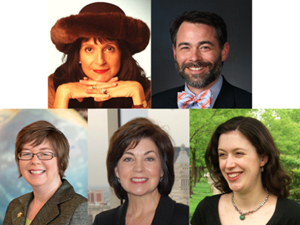
Inferior fileira esquerda para a direita: Michelle Larson, Theresa Mintle, Kate Eyler-Weave
Na busca Global para a Educação, se juntar a mim e líderes de renome mundial, incluindo Sir Michael Barber (Reino Unido), Dr. Michael Bloco (EUA), Dr. Leon Botstein (EUA), Professor Clay Christensen (EUA), Dr. Linda, Darling-Hammond (EUA), Dr. Madhav Chavan (Índia), Professor Michael Fullan (Canadá), Professor Howard Gardner (EUA), Professor Andy Hargreaves (EUA), Professor Yvonne Hellman (Holanda), Professor Kristin Helstad (Noruega), Jean Hendrickson (EUA), Professor Rose Hipkins (Nova Zelândia), Professor Cornelia Hoogland (Canadá), Honrosa Jeff Johnson (Canadá), Senhora. Chantal Kaufmann (Bélgica), Dr. Eija Kauppinen (Finlândia), Secretário de Estado Tapio Kosunen (Finlândia), Professor Dominique Lafontaine (Bélgica), Professor Hugh Lauder (Reino Unido), Professor Ben Levin (Canadá), Senhor Ken Macdonald (Reino Unido), Professor Barry McGaw (Austrália), Shiv Nadar (Índia), Professor R. Natarajan (Índia), Dr. PAK NG (Cingapura), Dr. Denise Papa (US), Sridhar Rajagopalan (Índia), Dr. Diane Ravitch (EUA), Richard Wilson Riley (EUA), Sir Ken Robinson (Reino Unido), Professor Pasi Sahlberg (Finlândia), Professor Manabu Sato (Japão), Andreas Schleicher (PISA, OCDE), Dr. Anthony Seldon (Reino Unido), Dr. David Shaffer (EUA), Dr. Kirsten Immersive Are (Noruega), Chanceler Stephen Spahn (EUA), Yves Theze (Lycée Français EUA), Professor Charles Ungerleider (Canadá), Professor Tony Wagner (EUA), Sir David Watson (Reino Unido), Professor Dylan Wiliam (Reino Unido), Dr. Mark Wormald (Reino Unido), Professor Theo Wubbels (Holanda), Professor Michael Young (Reino Unido), e Professor Minxuan Zhang (China) como eles exploram as grandes questões da educação imagem que todas as nações enfrentam hoje.
A Pesquisa Global para Educação Comunitária Página
C. M. Rubin é o autor de duas séries on-line lido pelo qual ela recebeu uma 2011 Upton Sinclair prêmio, “A Pesquisa Global para a Educação” e “Como vamos Leia?” Ela também é autora de três livros mais vendidos, Incluindo The Real Alice no País das Maravilhas, é o editor de CMRubinWorld, e é um Disruptor Fundação Fellow.
Siga C. M. Rubin no Twitter: www.twitter.com/@cmrubinworld


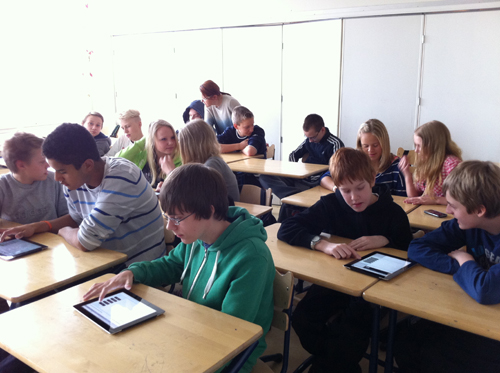
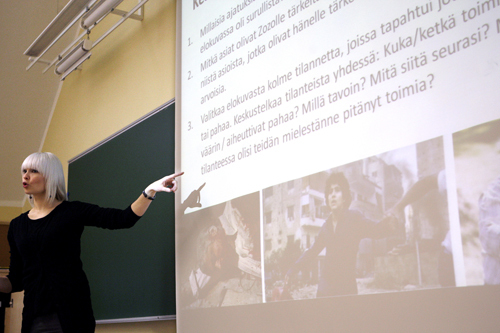


Comentários Recentes